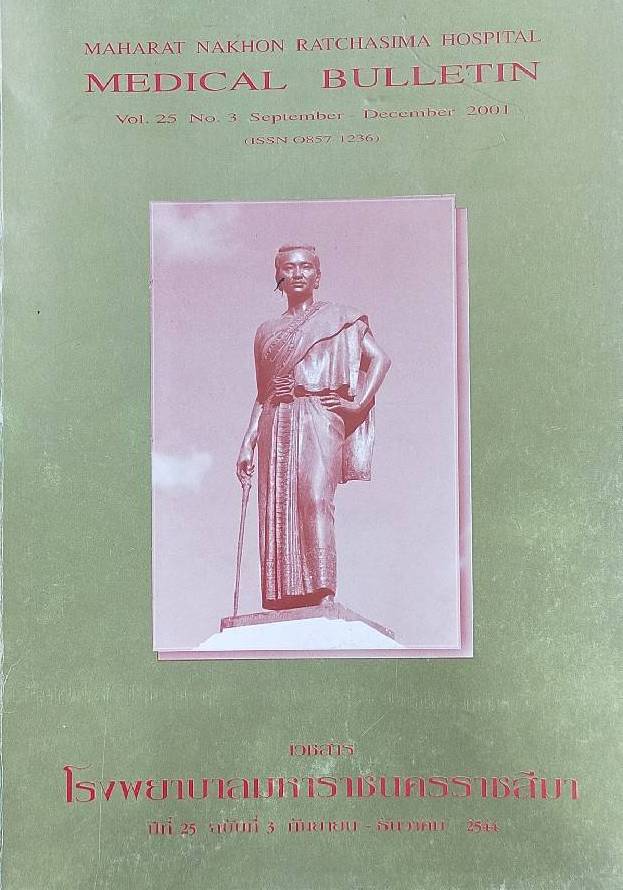การป้องกันการติดเชื้อเอชไอวีหลังสัมผัสโรคในศตวรรษที่ 21 (HIV Postexposure Prophylaxis in the 21st Century)
Main Article Content
Article Details

This work is licensed under a Creative Commons Attribution-NonCommercial-NoDerivatives 4.0 International License.
References
Henderson DK. HIV postexposure prophylaxis in the 21st century. Emerg Infect Dis 2001;7:254-8.
Nwokolo NC, Hawkins DA. Postexposure prophylaxis for HIV infection. The AIDS Reader 2001;11:402-12.
Centers for Disease Control and Prevention. Updated public health service guidelines for the management of occupational exposure s t o HBV, HCV, and HIV and recommendations for postexposure prophylaxis. MMWR 2001;50 (RR-11):1-52.
Conor EM, Sperling RS, Gelber R, et al, Reduction of maternalinfant transmission of human immunodeficiency virus type I with zidovudine treatment. Pediatric AIDS Clinical Trials Group Protocol O76 Study Group. N Engl J Med 1994;331: 1173-80.
Cardo DM, Culver DH, Ciesielski CA, et al. A case-control study of HIV seroconversion in health care workers after percutaneous exposure. N Engl J Med 1997;337:1485-90.
Blanche S, Tardieu M, Rustin P, et al. Persistent mitochondrial dysfunction and perinatal exposure to antiretroviral nuclcoside analogues Lanect 1999;354:1084-9.
Beltrami JF, Luo C-C, De la Torre M. HIV transmission after an occupational exposure despite postexposure prophylaxis with a combination drug regimen. Proccedings of the 4th Decennial Conference on Nosocomial Infections. Atlanta , Georgia , Mar 5-9, 2000; Centers for Disease Control and Prevention.
Jochimsen EM, Luo CC, Beltrami JF, et al. Investigations of possible failures of postexposure prophylaxis following occupational exposures to human immunodeficiency virus. Arch Intern Med 1999;159:2361-3.


